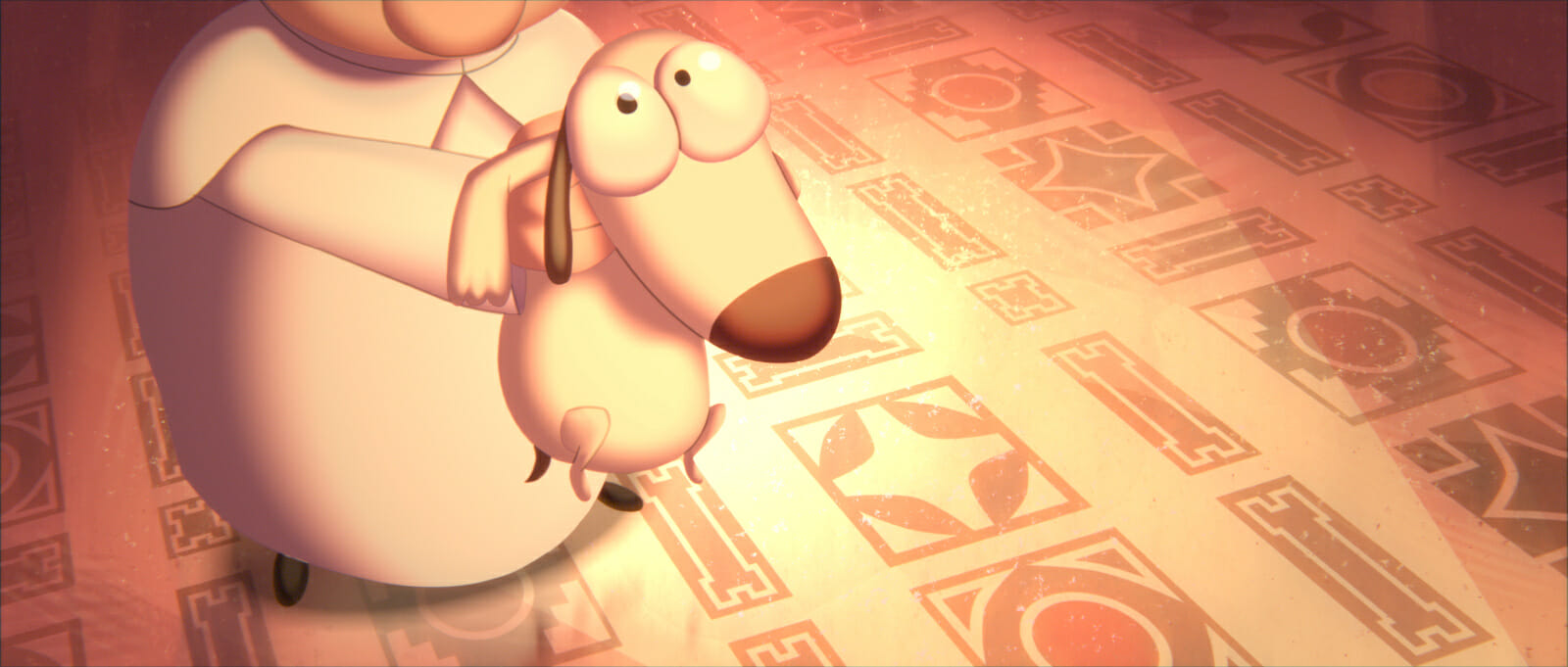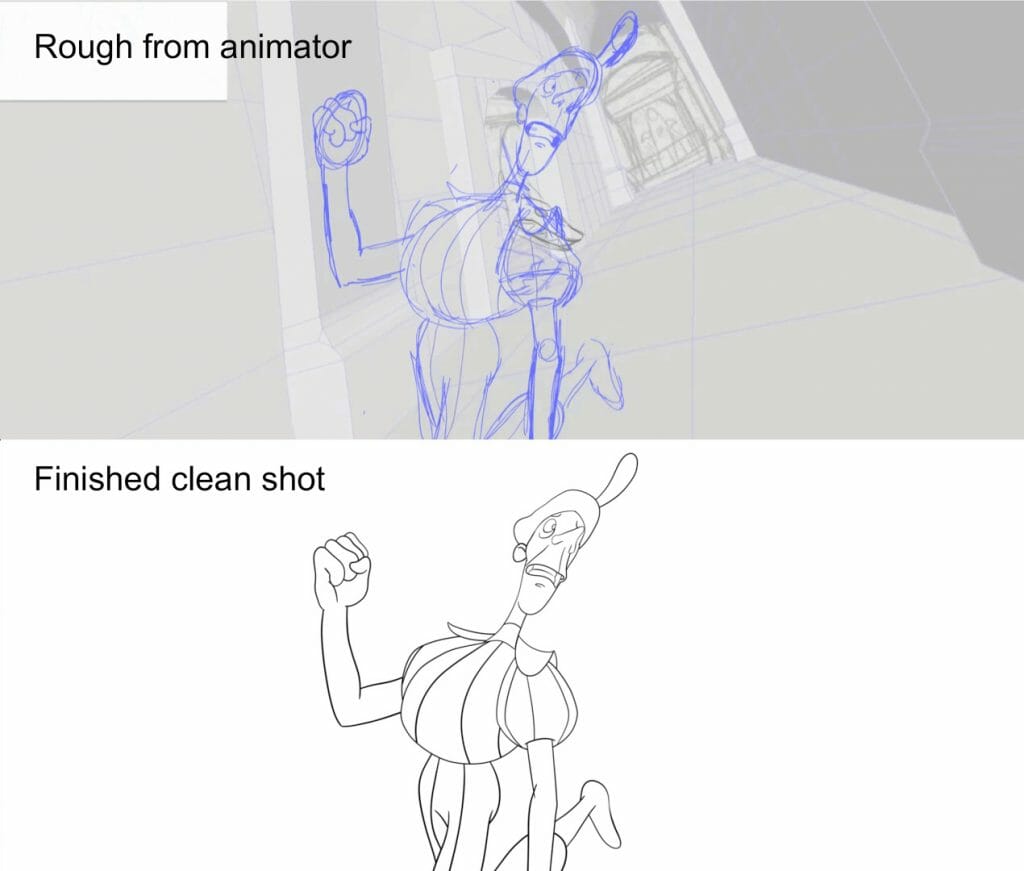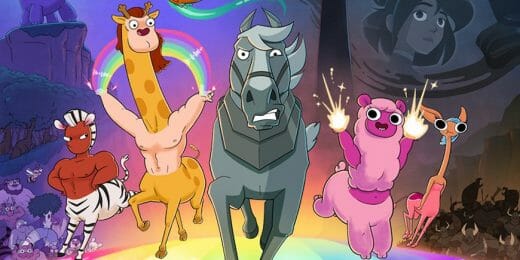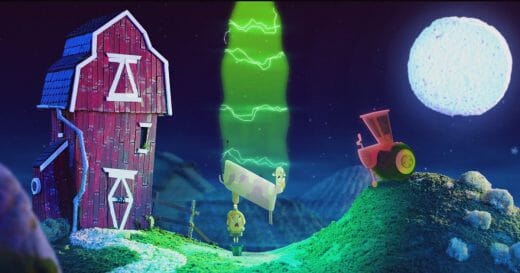
What would happen if the Pope’s pooch got loose in the Vatican? This is the surreal premise posed by The Pope’s Dog — an action-packed short film by the talented team at SCAD Animation Studio. Featuring stylish character design, impressive architectural background elements along with volumetric lighting and visual effects, The Pope’s Dog is a canine caper of biblical proportions.
We spoke to the supervising artists behind The Pope’s Dog, under the leadership of the short’s director, Neko Pilarcik-Tellez. Through these conversations, the team explains how Harmony was used in the short’s CUIB & DIP process, sharing insight on their workflow and how they achieved the film’s unique look. We also hear directly from the team members about their experience on the program — with plenty of advice for aspiring animation students. Watch The Pope’s Dog and read our full interview with the team below.
Hi Neko! Please give yourself and your team a brief introduction…
Neko: I’m Neko, director of The Pope’s Dog. I also got to work on some of the animation, cleanup and compositing for the film. Although I hold the title of director, this film wouldn’t have been possible without an amazing team of Supervisors, each of whom took creative leadership of a different aspect of production.
I’ve invited a few of them to join us for this discussion. Allow me to introduce: Molly Cooper (art director), Noah Catan (lighting & VFX supervisor), and Louise Wong (CUIB & DIP supervisor).
Please give a short synopsis of The Pope’s Dog…
Neko: The Pope’s Dog is about an act of kindness gone awry, as the Pope adopts a stray dog who gets loose and literally raises hell in the Vatican. It’s funny, action-packed, and a little scary.
Being SCAD Animation Studios’ first 2D production, we wanted to challenge the expectations of what hand drawn animation can look like. We were heavily inspired by the look of SPA Studios’ film, Klaus. And we wanted to see if students could create a similar style of volumetric lighting.
Of course, SPA’s lighting toolset is proprietary, so we had to create our own. Big shout out to Noah Catan on developing that. We were constantly learning on-the-fly, problem solving and adapting. Harmony was the perfect tool for this because it’s intuitive and versatile.

How would you describe the art style in The Pope’s Dog?
Molly: The art style of The Pope’s Dog consists of stylized, shape-based language and expressive, exaggerated characteristics. The backgrounds were inspired by visual development artist, Remi Salmon, while the characters took influence from the entire crew.
Guidelines were in place to ensure that the style was achievable by each individual artist. A cohesive style guide was made to visually convey these ideas. For example, there are no 90-degree angles — instead each angle has up to a 5-degree tilt to give the architecture and props a more playful feel. Large, complex shapes were broken down in a specific way to achieve smaller, more manageable shapes.
How did you create the beautifully lush colour palette that makes the style so vibrant?
Molly: The color palette was a collaboration between artists, Zachary St. Amand, Alison Irving, and myself. Inspiration came from existing analogous and split complementary color palettes, as well as Disney’s films, Tangled and Frozen.
The color palettes switch based on the different beats of the animatic. The colors match the moods of each scene, heightening the audience’s emotional experience.

The panning shots around the architectural features of Vatican City are incredible. Can you explain how you created these?
Noah: Those big camera fly-through shots were a challenge! We first started in 3D, using either Maya or Blender to animate a camera around a rough 3D model of the set. In Harmony, animators would reference a wireframe playblast of the camera move and match the character’s motion to the environment.
Our background painters and matte painting artists were integral to these shots, since several specific still frames of the background — split into many different layers — had to be painted and then projected back onto the 3D geometry. This way, these shots retained a nice painterly look without looking too 3D. We used Photoshop and Nuke for this process.

What tools in Harmony helped you to achieve the style of The Pope’s Dog?
Louise: The Pope’s Dog relied heavily on the tools that Toon Boom Harmony provided, especially during the film’s cleanup and inbetween (CUIB) as well as digital ink and paint (DIP) processes.
Harmony offered extremely intuitive tools for cleanup. In fact, a good number of the cleanup team never used Harmony before. But once they were trained on how to use the pencil tool, contour editor, and pencil editor, shots were able to be inked effectively with cleaned lines.
The film ultimately needed shots to be painted in a lineless style before moving onto our lighting process. With Harmony’s art layers, we could easily separate the lineart and colour fills. Combining this feature with the unpaint tool, lineart could easily be removed. Not only did Toon Boom Harmony offer industry-standard tools of the trade to the cleanup team, the software was also paramount in terms of exporting to our lighting process.
Can you tell us about the design process for your unique looking characters?
Neko: We wanted to create endearing, expressive characters with designs that lent themselves to our lighting process. We went with simple, geometric shapes as a base and stylized from there. Given that all the human characters are middle-aged or older, it was important to stylize them in a way that was appealing but didn’t make them look too cutesy or childlike. I think our artists did an amazing job with that.
How did Harmony help with the atmospheric lighting we see throughout the short?
Noah: Our volumetric lighting process, inspired by SPA Studio’s Klaus, is heavily reliant on Harmony and Nuke. In Harmony, in addition to cleaning up and inbetweening the animation, our CUIB artists had to create a ‘ColorMatte’ pass; a layer where every overlapping shape of a character is assigned a different color. This ColorMatte pass was extremely useful, since it allowed our lighters to work much more efficiently. The final cleaned up animation and the ColorMatte pass are exported together as EXRs using Harmony’s Multi-Layer Write Node, and are then imported into Nuke.
In Nuke, lighting artists used our custom 2D lighting toolset, which we called ‘Pantheon.’ With Pantheon, lighting artists could draw and animate up to ten custom light passes — with each pass fully controllable in color and opacity. Each shape of light and shadow was manually hand drawn and animated using roto-shapes. Background paintings and color scripts had to be created prior to lighting, so that lighting artists could use the color scripts as reference to integrate the characters into the background.
What did you learn from SCAD’s animation program?
Maddie: SCAD’s animation program provides an amazing introduction into the animation professional pipeline. As an underclassman, you learn the fundamentals of your concentration, developing your skills as an 2D or 3D animator or an artist focusing on story and concept.
Honing these skills, students move into upper-level classes where there is a strong focus on artistic collaboration, emulating that of an animation studio. Throughout the time spent at SCAD, students are not only taught the skills needed to work in the industry, but also are introduced and acclimated to having experience working with other animators on projects before graduation.

Are there any key collaborators or team members who played a role on The Pope’s Dog that you’d like to shout out?
Maddie: I’d love to first shout out our director, Neko Pilarcik-Tellez, for not only helping out on so many aspects of the film but providing as means of support when the going got tough. Next, I’d like to shout out Noah Catan, for his amazing work with the VFX and lighting on the film, and dedication to doing something that’s never been done on a college level. Also our art director, Molly Cooper, for developing the look of the film and her incredible talent in visual development.
Our leads were also driving forces, Fallon Wallace and Julia Schoel (animation supervisors) and Louise Wong (CUIB & DIP supervisor) made an enormous impact on the success of this film. Finally, I’d like to mention our faculty supervisor, John Webber, for overseeing and supporting the team throughout the entirety of the pipeline.
Neko: Aww, thank you Maddie! I’d like to shout out Maddie since she’s too humble to sing her own praises. She really was the glue that held this production together and she did it as a sophomore, no less! Also, our amazing and amazingly patient sound designer, Liz Moore, who took on all our last-minute changes without complaint. Thanks for making the film sound great!
Finally, I’d like to shout out the entire crew. Seriously, this film would never have gotten made if it weren’t for everyone giving it their all and wearing many more hats than the credits sequence possibly can convey. It was a pleasure and an honor to get to work with everyone.
- Want to see more beatified work from the team behind The Pope’s Dog? Be sure to visit the pages and portfolios showcasing work from Neko Pilarcik-Tellez, Maddie Tody, Molly Cooper, Noah Catan, and Louise Wong, as well as SCAD Animation Studio.
- Looking for another film created by SCAD’s students? Read how Julia Schoel turns heroic fantasy on its head in The Legend of Pipi.
- Interested in using Toon Boom Harmony for your thesis film? Students can get access to industry standard tools for up to 84% off.

